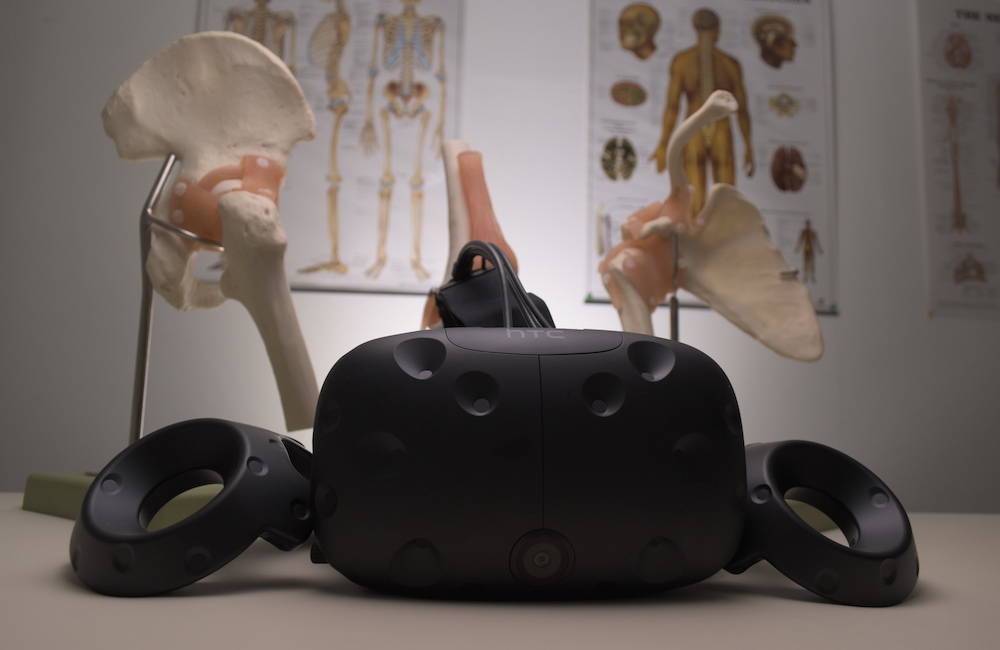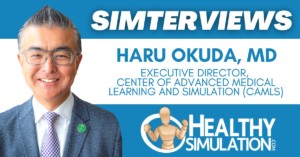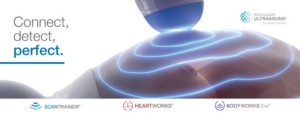Augmented Reality in Simulation
Augmented Reality (AR) in simulation education is when display-based systems combine real and virtual imagery and are interactive in real-time. AR systems allow learners to interact in real-world environments that are enhanced with virtual imagery. In other words, a visual display technology augments the physical environment. This happens in one of two ways: through a head-mounted display or via a non-immersive monitor-based video, respectively transparent view or window-on-the-world view.
AR is able to create immersive, hands-on, and stimulating learning experiences using many kinds of display devices, including computers, tablets, and smartphones. Healthcare education programs are seeing the benefits and advantages that AR-based learning systems provide, including remote instruction and interactive simulations.
AR is rapidly developing, and due to its flexibility, it is increasingly used in education, including medical and healthcare education and training. By integrating physical and virtual environments, AR provides various means of delivering learning content and enhancing learners’ experiences.
Sponsored Content:
History of AR in Medical Education and Training
Before the advent of basic computer-assisted anatomy programs, healthcare education used the usual tools of classroom lectures and textbooks, eventually enhancing learning with cadavers, anatomical models, and standardized participants. But starting in the 1990s, multimedia approaches ushered in the era of technological advances, from computer-based stereoscopy and software programs like Microsoft PowerPoint, through the development of virtual reality (VR) head-mounted displays. Smartphones and tablets increased accessibility to AR, and have proven invaluable in the age of COVID-19.
Benefits of AR in Medical Education
It’s difficult to overstate the potential of AR to prepare healthcare learners for their future profession. AR-based training can effectively and efficiently train medical professionals while offering a safe educational experience, addressing specific skills, and enhancing learners’ experiences. AR learning is fun and interesting, and is becoming associated with highly positive personal experiences. Students report feeling confident with the adoption of AR alternatives to traditional learning, in part perhaps because of high levels of digital literacy. Self-paced learning is facilitated by learners’ ability to use devices they already own, without having to adjust to headset VR programs.
Sponsored Content:
AR-based learning boosts outcomes in several areas of learning, including enhanced theoretical knowledge and practical skills. Support of student experiences translates into improved learning outcomes.
Knowledge and understanding: Medical, nursing, and healthcare students all are presented with vast amounts of knowledge pertaining to human anatomy and bodily functions. Using AR-based learning programs has the distinct advantage of being able to immerse learners in three-dimensional representations of anatomy, anatomy systems, and the way systems function within the body. Learners are able to manipulate the digital subject, identify and explore spatial inter-relationships, and focus on complicated anatomical structures.
In the digital realm, adding and subtracting anatomical structures can help students understand the related body functions and how systems interact. AR anatomy programs can easily illustrate complex systems that involve multiple muscle groups. And finally, the range of pathologies that can be featured in virtual representation is only as finite as the pathologies themselves and don’t depend on the limits of a human cadaver or anatomical models.
Practical skills: While clinical experience and expensive simulators build practical skills, they have limited applications in educational programs due to practical and financial barriers faced by the educational programs a learner has access to. In contrast, AR technology is becoming more widely available and accessible, and show training using AR-based tools contributes to improvements and practical competence in healthcare teaching and training. Learners who are using AR versions of surgical training, biopsy practice, and practical procedures such as cannulation, are exhibiting high levels of learning and fewer procedural errors.
Social skills: In addition to anatomical knowledge and understanding, and practical skills, healthcare professionals are expected to also comprehend social interactions and human behavior. AR provides an opportunity to prepare trainees for complex social situations across a spectrum of healthcare settings. AR supports safe social learning in a managed environment, as well as the development of inter-professional competencies critical for healthcare professionals.
Challenges and Future Considerations
Some of the challenges that face the adoption of AR technologies for medical and healthcare education are the cost of designing the interactive platforms; the lack of availability for growing numbers of learners; and making digital technology available to all students in an accessible and equitable way. However, where these challenges can be overcome, educators have been successful in creating student-centric, engaging, and enriching experiences for learners.
Digital textbooks, an idea that has been percolating in higher education for more than a decade, plus mobile learning and wearable tech, which are newer digital learning platforms, all have enormous potential. By making AR-based learning available on personal devices, including smartwatches, it would be less expensive for learners to adopt. One example is the use of Google Glass in anatomy courses and hospital rotations at the University of California, Irvine School of Medicine. Google Glass offers the ease and flexibility of accessing course content in a hands-free format, while also allowing users to communicate with devices via voice command.
Case Western Reserve University is developing and using a software called HoloAnatomy, which allows learners to visualize anatomy in three-dimensional views. It’s designed to engage learners to move, collaborate and interact with one another, pan in and out of the holograms, and replace cadaver-based techniques for learning body systems and functions.
Augmented Reality in Simulation Vendors
3B Scientific Smart Anatomy: Each 3B Scientific Anatomy model comes with this feature, which combines analog and digital learning. 3B Scientific teamed up with 3D4Medical to bring realistic digital 3D anatomical content to instructors and learners. 3B Smart Anatomy combines anatomical models of the human body with a tool for smartphones, tablets, or computers to access interactive anatomy courses, quizzes, and virtual models.
OculAR SIM: This is a smartphone application designed specifically for the Faculty of Optometry at Deakin University. It allows faculty and students to explore the visual system and components using AR.
SentiAR: SentiAR uses medical augmented reality to create holographic visualizations of patient anatomy. During interventional procedures, the anatomical image floats over the patient. This is an article about AR and VR companies in the medical field. Learn more about Augmented Reality in Simulation by reading the articles below.
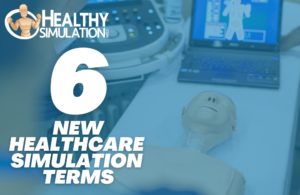
6 Medical Simulation Keywords You Need to Know About
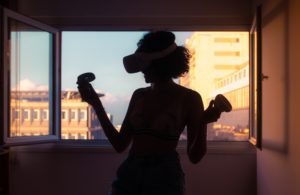
XR Management Systems Help Scale AR and VR Simulation Deployment
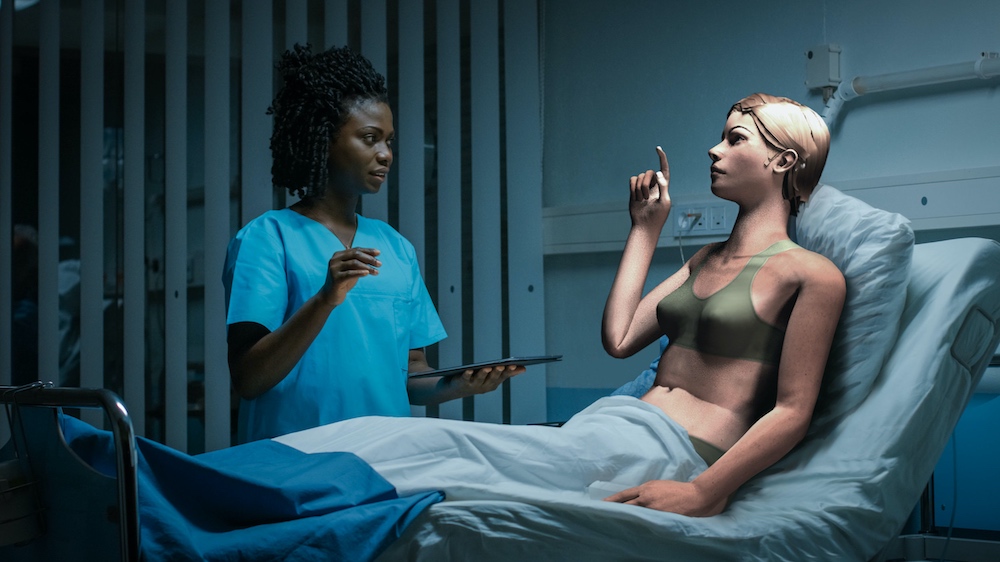
How AR Technology Represents the Future of Healthcare Simulation Training
Resources:
- https://www.ncbi.nlm.nih.gov/pmc/articles/PMC7246121/
- https://www.ncbi.nlm.nih.gov/pmc/articles/PMC8281102/
- https://www.healthysimulation.com/augmented-reality-in-medicine/
Sponsored Content:



